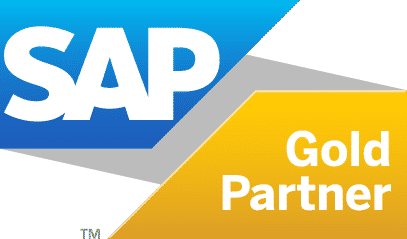
As businesses aggressively pursue cloud migration, many encounter roadblocks that complicate their transformation path and jeopardize the many benefits and ROI that cloud computing provides.
WHY IS CLOUD MIGRATION MORE COMPLICATED THAN MANY ORGANIZATIONS REALIZE? WHAT FACTORS CONTRIBUTE TO THIS COMPLEXITY?
The overall goal of cloud use, migration plans, and whether applications and managed infrastructures are suited for cloud and multi-cloud environments are all important considerations that might add to the complexity. Not every application is cloud-ready today and reaping the benefits of migrating to cloud may necessitate a change in the applications running in the existing environment.
Cloud migration options can range from the extension of data management across a cloud or across many clouds to the deployment of cloud infrastructure and application hosting in the cloud environment. Understanding where the data is located and whether or not the organization is set up for multi-site management might add unexpected complications to the process of performing data migrations.
WHAT ARE THE MOST WIDESPREAD MISCONCEPTIONS ABOUT CLOUD MIGRATION THAT DON’T CORRESPOND TO THE REALITY OF THE SITUATION?
The cloud model is about attaining a business-driven outcome through the provision of on-demand, dynamic information technology agility. There is no single “cloud” solution that is appropriate for all customers. Instead, other approaches can be used to reach this result, as well as numerous alternatives to explore. The right private or hybrid cloud for an organization’s journey, as well as how to use existing infrastructures and how to balance CAPEX and OPEX investments, are all important considerations for IT leaders.
WHAT ARE THE MOST EFFECTIVE STRATEGIES FOR CONTROLLING EXPECTATIONS?
The most effective strategy to manage expectations is to begin as early as possible with a consulting model. For example, many companies collaborate with customers upfront to better understand their challenges, desired end benefits, and the operational environment in which the solution will operate before delivering the solution.
Depending on their expectations, several techniques of generating advantages can be used to achieve them. There are numerous cloud operating models available, public, private or on premisesand each has its own set of advantages and disadvantages, based on the desired goal. High availability, multi-tenancy, and disaster recovery are just a few of the primary business factors that are pushing clients to use cloud computing services.
Cloud sprawl, for example, can arise when a company loses track of its instances, storage locations, and service providers in the cloud. Your company may face additional risks along the way, such as exceeding its financial budget, lacking internal competence, and being vulnerable to cyberattacks. You may foresee problems before they materialize by putting out a cloud migration strategy. A well-thought-out cloud migration strategy can help you reduce risk and boost your chances of completing your cloud transfer successfully and with the least amount of downtime.
WHAT STEPS SHOULD YOU TAKE TO MINIMIZE UNNEEDED HASSLES DURING A CLOUD DEPLOYMENT?
Customers must examine several important aspects before embarking on a cloud transformation project, both from a technical and business one. In addition to aligning business operations with the cloud model, several other considerations can assist avoid snags. Customers must first question, “Why am I shifting to the Cloud? It is necessary to understand and align expectations with the desired outcome.
Customers must then delve down into specific areas to evaluate, for example, whether all of the applications they wish to use are optimized for this approach before proceeding. Data security and sovereignty issues must be considered as part of this evaluation, as well as the sort of cloud that best meets their needs (whether it is on-premises, a hybrid model, private cloud, or a public cloud environment). A decision must also be made on the sort of consumption model to use, which can be either Infrastructure as a Service or Software as a Service. A platform as a service is an example of a consumption model that uses software as a service (PaaS). A company’s Cloud workshop, which brings together experts to whiteboard the best solution based on desired goals, can assist clients in navigating the decision-making process.
WHAT ARE THE ORGANIZATIONAL AND CULTURAL CHANGES THAT WILL BE REQUIRED FOR SUCCESSFUL CLOUD IMPLEMENTATION?
Unanimous approval of a new operations model that moves away from a compartmentalized approach to IT working as a “service provider” for the company is one of the most important conditions to ensure a successful cloud transformation. Instead of concentrating on infrastructure management, IT should concentrate on core applications and intended outcomes. Sometimes organizations put forth a strategy but fail to provide the necessary amount of support to back it up.
Change is always tough, and if employees are expected to carry out this new method as a “side project,” it is almost certain that they will fail miserably. As a result, leadership is required to set the vision and offer the essential support for this shift to take place.
Highbar Technocrat is one of the leading end-to-end IT solution providers for the Infrastructure, EC&O, Real Estate, and Power sectors. They are SAP Gold partner and offer a wide bouquet of digitally integrated solutions ranging from implementing SAP-based ERP solutions like Rise with S/4HANA, Cloud-based solutions to 5D BIM for mega infra-projects, RPA & IoT solutions, and many more. With an in-depth understanding and core competence of the construction & infrastructure industry, Highbar is the perfect blend of domain knowledge in the infrastructure business with a team that is well equipped to understand and relate to the requirements of the sector.
To know more write us at enquiry@highbartech.com or call +91 89767 11399




